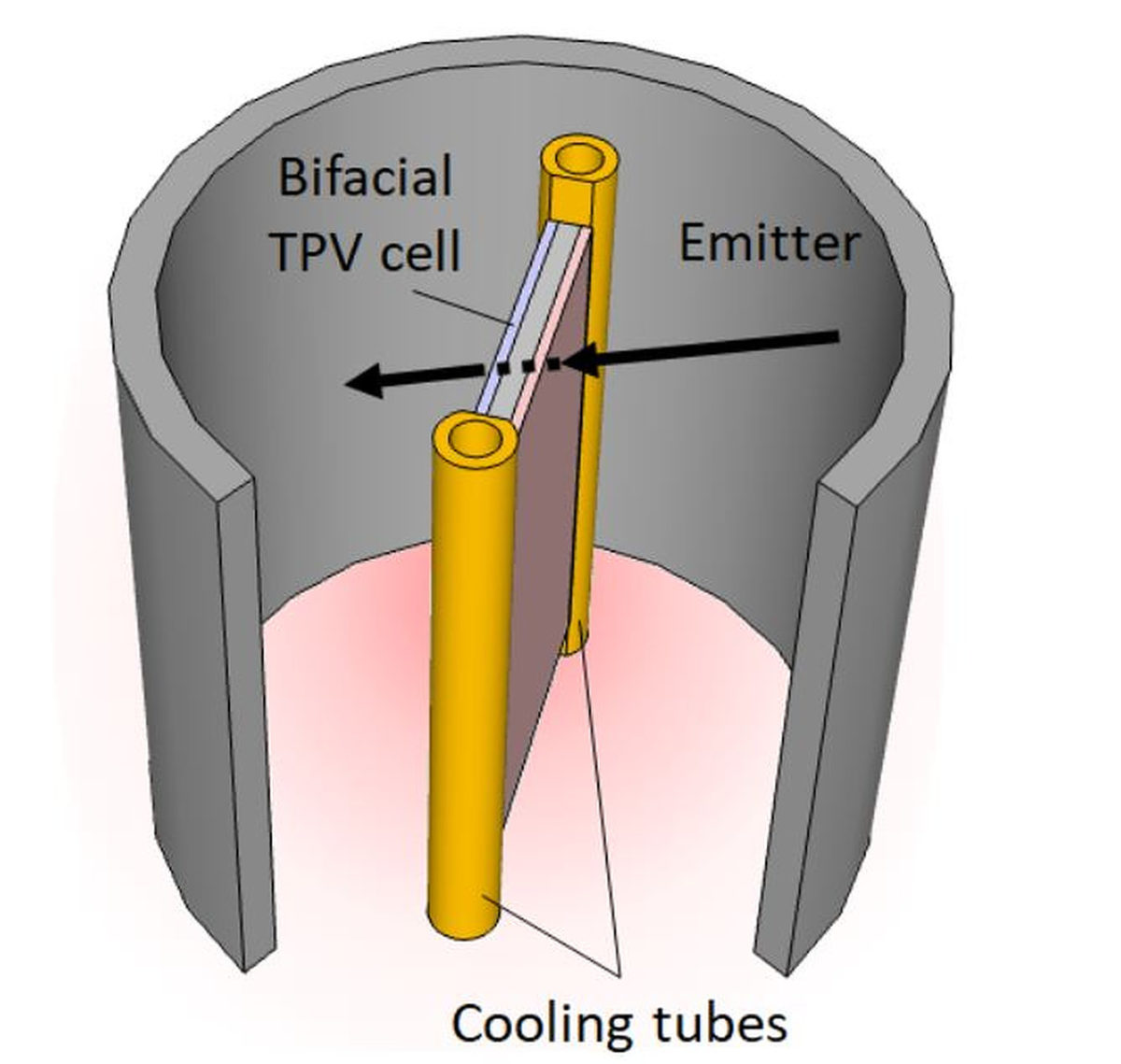Scientists from the Technical University of Madrid have developed a bifacial thermophotovoltaic (TVP) cell for grid-scale energy storage and residential applications.
“Bifacial TPV cells allow for the conversion of radiant heat to electricity at lower temperatures than conventional monofacial designs,” researcher Alejandro Datas told pv magazine. “Therefore, they could be used for industrial waste heat recovery or thermal energy storage systems that operate at lower temperatures.”
He said TPV systems usually operate at temperatures above 1,200 C, which is necessary to make the TPV conversion efficient. “The use of bifacial TPV cells in these systems would allow the operating temperature to be lowered, allowing the development of smaller systems,” Datas added.
In a TPV cell, a thermal emitter emits photons and directs them toward a closely spaced TPV cell made of a low-bandgap semiconductor.
“Within the cell, photons with wavelengths shorter than that of the semiconductor bandgap are absorbed and produce electron−hole pairs,” the researchers explained, noting that electrons and holes are collected in a separate electron transport layer (ETL) and a hole transport layer (HTL), which results in the generation of an external current.
The thermal emitter harvests thermal radiation from both sides, with outband photons being transmitted through the cell and reabsorbed in the emitter, while also eliminating optical losses at the mirror/cell interface.
“As the cell is illuminated from both sides, the cell is able to produce twice the power than conventional monofacial TPV cell designs,” the group said, adding that the edges of the cell are attached to highly reflective tubes equipped with a fluid intended for cooling.
“By cooling the cells from the edges, it is possible to keep them at a relatively low temperature, provided that the cell size (width and thickness) is properly designed to accommodate the high lateral heat fluxes that are expected, especially when the emitter temperature is high,” the scientists explained.
They said the device can achieve twice the power density of “conventional” monofacial thermophotovoltaic devices without increasing the system costs.
“This means that the cost of generated power can be half that of conventional devices,” Datas said.
The academics presented the system in “Bifacial Thermophotovoltaic Energy Conversion,” which was recently published in ACS Photonics.
“Bifacial TPV cells are appealing for developing practical high-efficient and low-cost TPV devices for power generation in an extended range of heat source temperatures,” they concluded.
The same research team introduced a latent heat thermophotovoltaic (LHTPV) battery in March. The device uses renewable electricity to melt low-cost metals such as silicon or ferrosilicon alloys to produce and store latent heat, which is in turn used by a thermophovoltaic generator to produce power. The scientists said the device could store electricity at a cost of €10 ($10.7)/ kWh for a 10 MWh system.
This content is protected by copyright and may not be reused. If you want to cooperate with us and would like to reuse some of our content, please contact: editors@pv-magazine.com.




By submitting this form you agree to pv magazine using your data for the purposes of publishing your comment.
Your personal data will only be disclosed or otherwise transmitted to third parties for the purposes of spam filtering or if this is necessary for technical maintenance of the website. Any other transfer to third parties will not take place unless this is justified on the basis of applicable data protection regulations or if pv magazine is legally obliged to do so.
You may revoke this consent at any time with effect for the future, in which case your personal data will be deleted immediately. Otherwise, your data will be deleted if pv magazine has processed your request or the purpose of data storage is fulfilled.
Further information on data privacy can be found in our Data Protection Policy.